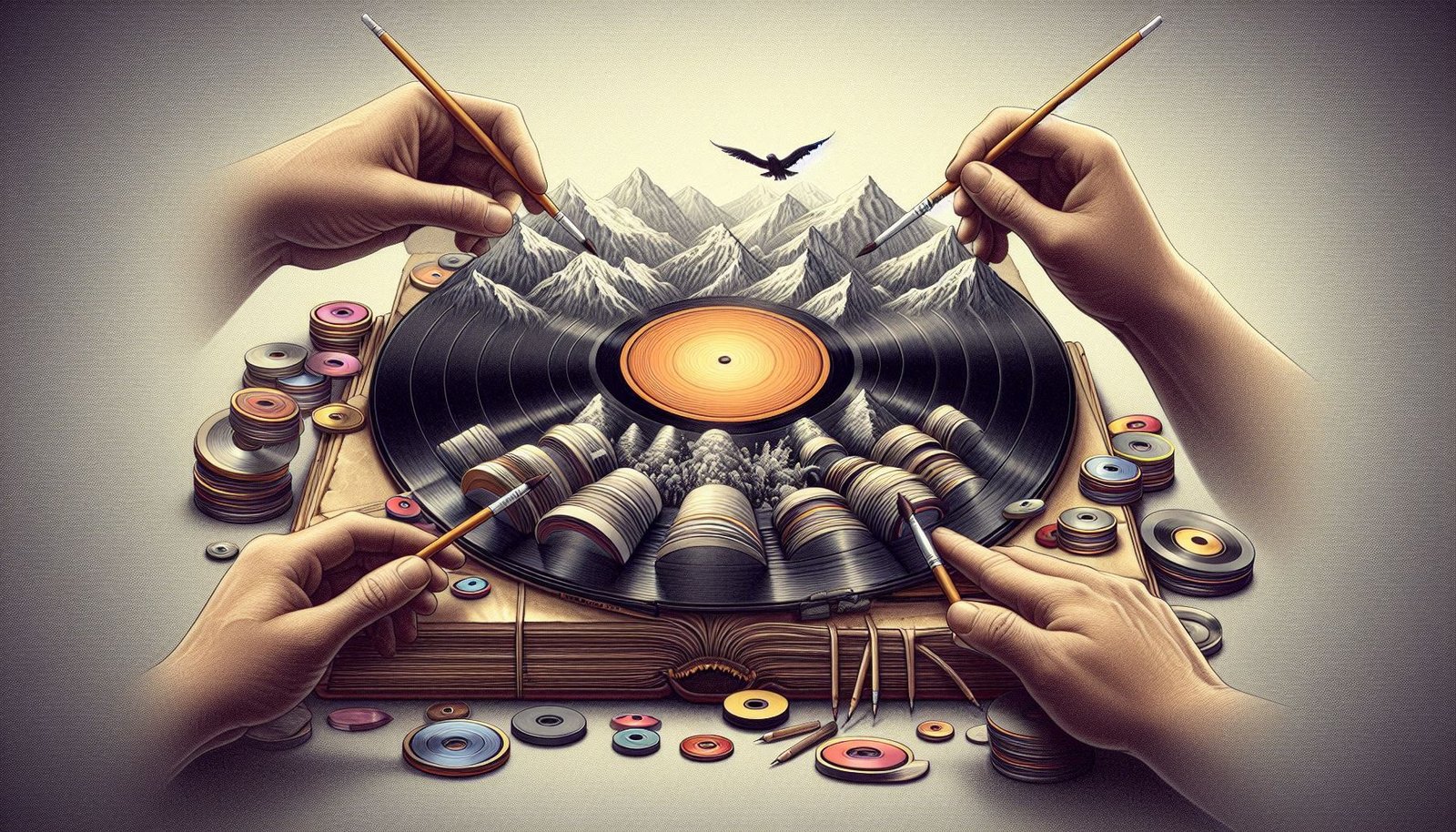
The 1910s were a groundbreaking decade for music, marking a shift from the late Romantic era into a more modern sound. It was a time of great innovation and experimentation, with genres like jazz, blues, and early forms of popular music starting to make waves. While the concept of an “album” as we know it today didn’t exist, recordings, sheet music, and live performances played pivotal roles in shaping the music of this decade. From ragtime and opera to early jazz and blues, the 1910s gave birth to sounds that would go on to influence the entire 20th century.
In this article, we’ll take you on a journey through some of the most influential recordings, performances, and compositions of the 1910s. These pieces helped define the musical landscape of the time and left a lasting legacy on the world of music. Whether you’re a casual listener, a music enthusiast, or just curious about how today’s music got its start, this list will give you a taste of the decade that helped lay the foundation for much of what we hear today.
1. Scott Joplin – “Treemonisha” (1911)
Let’s kick things off with a groundbreaking work from the “King of Ragtime” himself, Scott Joplin. While he’s most famous for his ragtime piano works like “Maple Leaf Rag,” Joplin took a bold leap in 1911 with the opera Treemonisha. This wasn’t just a typical opera—it was a fusion of African American folk traditions, classical forms, and ragtime rhythms. In a time when African American composers struggled to gain recognition in the classical world, Joplin created something that went against the grain.
Why it mattered:
Treemonisha was ahead of its time, blending cultural storytelling with the complexity of opera. Though it wasn’t fully appreciated until later in the century, it represented a monumental achievement for Joplin, who dreamed of elevating ragtime and Black music into the realm of classical traditions.
Legacy:
Joplin’s Treemonisha is now recognized as a crucial work in both ragtime and American opera. Its influence on modern operatic forms and on the visibility of African American composers cannot be overstated.
2. Enrico Caruso – “The Complete Victor Recordings” (1910s)
Enrico Caruso, one of the most famous opera tenors of all time, was a megastar by the 1910s. His recordings for the Victor Talking Machine Company defined what it meant to be a global music sensation. Opera was incredibly popular during this period, and Caruso’s powerful voice was the soundtrack for countless households. His 1910 recording of “Vesti la giubba” from Pagliacci remains one of his most iconic, bringing operatic emotion into the homes of millions for the first time.
Why it mattered:
Caruso didn’t just showcase his vocal talent—he also showed the power of recorded music. His records proved that classical performances could be commercially viable, creating a blueprint for the future music industry.
Legacy:
Caruso’s success as a recording artist laid the groundwork for future global superstars. His recordings popularized opera far beyond the concert hall and proved the value of recorded sound in reaching a mass audience.
3. Original Dixieland Jass Band – “Livery Stable Blues” (1917)
Now, if you’re into jazz, you’ve got to give props to the Original Dixieland Jass Band (ODJB). Their 1917 recording of “Livery Stable Blues” is often credited as the first jazz record ever made. The band, led by cornetist Nick LaRocca, was known for its energetic, brash, and slightly chaotic performances—something completely different from the structured classical and popular music of the time.
Why it mattered:
This recording was a turning point for music. It was the first time the wild, improvisational sound of jazz was captured on record, making it accessible to listeners across the country. Livery Stable Blues introduced the world to a genre that would eventually dominate American music.
Legacy:
Though ODJB’s place in jazz history is sometimes debated, there’s no denying that this record put jazz on the map. The upbeat, syncopated rhythms and spontaneous feel of their music paved the way for legends like Louis Armstrong, Duke Ellington, and countless others.
4. W.C. Handy – “Memphis Blues” (1912)
Blues was another genre making waves in the 1910s, and W.C. Handy’s Memphis Blues was a game-changer. Often called “The Father of the Blues,” Handy took the raw, emotional sounds of the blues and gave them a more structured, polished form that appealed to a wider audience. His 1912 composition Memphis Blues was one of the first blues songs to gain mainstream success.
Why it mattered:
Memphis Blues wasn’t just a song; it was a cultural milestone. It brought African American music traditions into the mainstream and laid the foundation for what would become one of the most influential genres of the 20th century.
Legacy:
W.C. Handy’s work inspired generations of blues musicians, from Robert Johnson to B.B. King. His compositions were among the first to bridge the gap between Black and white audiences, showing that the blues could resonate with everyone.
5. Igor Stravinsky – “The Rite of Spring” (1913)
Over in Europe, classical music was undergoing its own revolution. Igor Stravinsky’s The Rite of Spring (1913) premiered in Paris and caused an outright scandal. Why? Because it broke every rule in the classical music playbook. With its dissonant harmonies, irregular rhythms, and wild, unpredictable melodies, The Rite of Spring represented a radical departure from the lush romanticism that dominated classical music in the 19th century.
Why it mattered:
The Rite of Spring shocked audiences with its bold new approach to orchestration and structure. Its premiere sparked riots, but it also marked a new era in modern classical music, influencing composers for decades to come.
Legacy:
Stravinsky’s groundbreaking work had a lasting impact on classical music, film scores, and even jazz. Its innovative approach to rhythm and harmony is still felt today in contemporary classical and experimental music.
6. Al Jolson – “You Made Me Love You” (1913)
If there’s one artist who embodied early American popular music, it’s Al Jolson. In 1913, he recorded “You Made Me Love You,” a sentimental ballad that captured the hearts of millions. Jolson was known for his big, theatrical voice and over-the-top performances, and this song showcased his ability to connect emotionally with an audience.
Why it mattered:
Jolson helped transition popular music from the vaudeville stage to recorded sound. His ability to combine emotional depth with showmanship made him one of the most beloved entertainers of his era.
Legacy:
Al Jolson’s influence on American popular music can’t be overstated. He was a key figure in shaping what we now think of as the American songbook, and his style paved the way for crooners like Frank Sinatra and Bing Crosby.
7. James Reese Europe – “Clef Club Orchestra Recordings” (1914)
James Reese Europe was a trailblazer in more ways than one. As an African American bandleader and composer, he brought a new level of sophistication to African American music during the 1910s. His Clef Club Orchestra, which recorded in 1914, was the first African American orchestra to perform at Carnegie Hall. Europe’s music combined elements of ragtime, early jazz, and military band traditions.
Why it mattered:
James Reese Europe was instrumental in bringing African American music to a wider audience. His work helped blur the lines between classical, popular, and traditional African American music, showing the world that Black musicians could be serious composers and performers.
Legacy:
Europe’s influence on jazz, big band, and popular music is undeniable. His orchestra set the stage for future generations of African American musicians and paved the way for the Harlem Renaissance.
8. Jelly Roll Morton – “The Jelly Roll Blues” (1915)
Jelly Roll Morton was one of the first true jazz composers, and his 1915 hit The Jelly Roll Blues was a major milestone. Morton combined the rhythmic drive of ragtime with the improvisational flair of early jazz, creating a style that was uniquely his own. He even claimed to have “invented” jazz—whether or not that’s true, there’s no denying his influence on the genre.
Why it mattered:
The Jelly Roll Blues is one of the earliest examples of written jazz, showcasing Morton’s talent for combining structure with spontaneity. This fusion of composition and improvisation would become a hallmark of jazz throughout the 20th century.
Legacy:
Jelly Roll Morton’s contributions to jazz are legendary. His innovative approach to composition and performance laid the foundation for future jazz giants like Duke Ellington and Count Basie.
9. Sophie Tucker – “Some of These Days” (1911)
Known as “The Last of the Red Hot Mamas,” Sophie Tucker was a vaudeville star with a powerful voice and a larger-than-life personality. Her 1911 recording of Some of These Days became an instant hit and showcased her ability to mix jazz, blues, and popular music into one unforgettable sound.
Why it mattered:
Sophie Tucker was a pioneer for women in music, breaking barriers in an industry dominated by men. Her bold style and powerful voice influenced generations of female performers, from Bessie Smith to Aretha Franklin.
Legacy:
Tucker’s mix of humor, sass, and raw talent made her a beloved figure in American music. Her success paved the way for future female singers to take center stage in popular music.
Conclusion
The 1910s were a transformative decade for music, with artists across genres pushing boundaries and experimenting with new sounds. From the early beginnings of jazz and blues to the dramatic shifts in classical music, the 1910s set the stage for the musical revolutions of the 20th century. The albums and recordings of this era laid the groundwork for everything from rock and roll to hip-hop, and their influence is still felt today.
As music fans, it’s crucial to look back at the pioneers who made it all possible. Their work shaped not only the sound of the 1910s but also the future of music as we know it. So, the next time you listen to a chart-topping hit or your favorite throwback jam, remember—it all started with the trailblazing sounds of a century ago.


